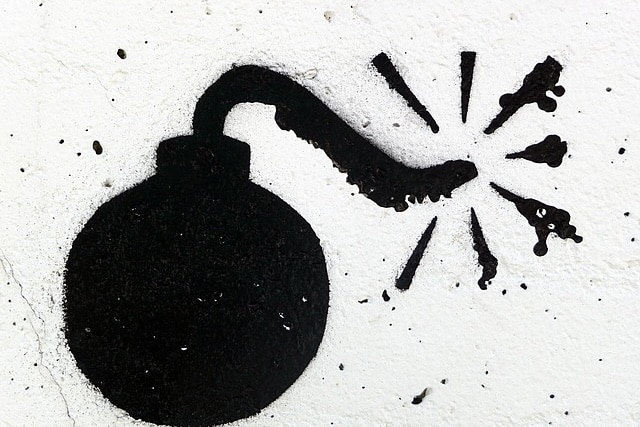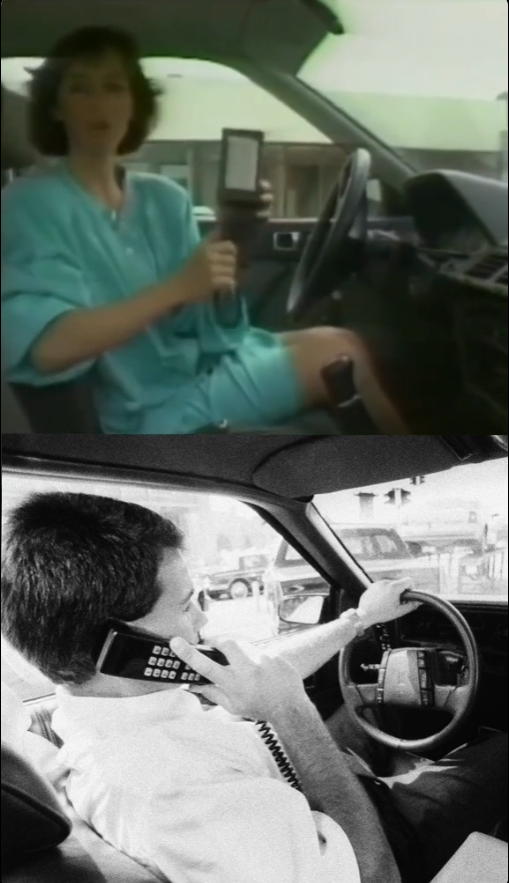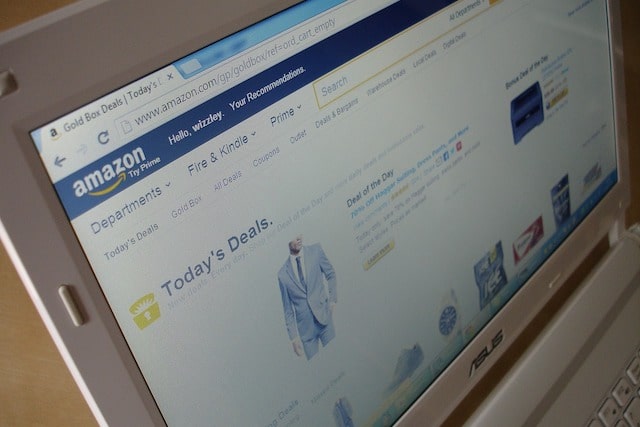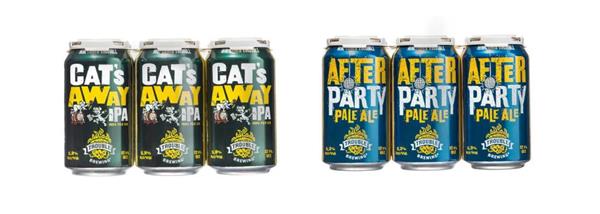10 Fake Items That Fooled Buyers and Made Real Money
One of the most outrageous art scams in history saw collectors drop a staggering $80 million on paintings that weren’t even real. Not “modern interpretations.” Not “inspired by.” We’re talking full-on forgeries — slapped with phony provenance, sold as masterpieces, and hung on wealthy walls for years before anyone caught on.
But why stop at art? The truth is, scamming isn’t exclusive to galleries and museums. If something has value — real or perceived — someone out there is probably faking it. And more often than you’d think, they’re getting away with it.
10. The Fake Airport Scam: Nigerian Scammers Fooled a Bank Out of $242 Million

Selling a fake painting is one thing—create a convincing forgery, frame it, and hand it over to an unsuspecting buyer. But selling a fake airport? That’s a whole new level of audacity. In the mid-1990s, three Nigerian scammers pulled off one of the most outrageous scams in history, convincing a senior Brazilian bank official to invest $242 million in a nonexistent airport. And you thought the “Nigerian Prince” email scams were bad? This one makes those look like child’s play.
Here’s how the scam unfolded: The three men, posing as legitimate investors, pitched an incredible opportunity to a Brazilian banker. They claimed they were building a massive airport and promised him a $10 million commission for helping them secure funding. The deal sounded too good to be true—because it was. But the banker, enticed by the promise of easy money, fell for it hook, line, and sinker.
Over the course of several months, the banker funneled $242 million from his bank into various accounts around the world, controlled by the scammers. In return, he got nothing but false promises and fake documents. The airport, of course, didn’t exist. It was a complete fabrication, designed to steal as much money as possible before the scam unraveled.
What’s even more shocking is what the scammers did with the stolen money. They used it to buy luxury properties, live the high life, and enjoy the fruits of their crime—until they were eventually caught. In a twist of poetic justice, the scammers were convicted of their crimes, and their ill-gotten assets were seized and returned to the bank.
This scam, while far more elaborate than the classic “Nigerian Prince” email, follows the same basic blueprint: prey on greed and trust, promise massive rewards with no risk, and disappear with the money. The difference here is the scale. Instead of asking for a few thousand dollars, these scammers targeted millions, and for a time, they pulled it off spectacularly.
The fake airport scam serves as a stark reminder of how sophisticated scams can become—and how important it is to question even the most convincing offers. Whether it’s a fake painting, a fake airport, or a fake email, the golden rule remains the same: if it sounds too good to be true, it probably is.
9. An Alarming Truth: Up to 30% of Medicines in Developing Countries Are Fake

Imagine being seriously ill—malaria, pneumonia, or another life-threatening disease—and finally managing to get your hands on medication, only to find out later… it was a fake.
Sounds unbelievable, right? But it’s shockingly true.
According to the World Health Organization (WHO), as much as 30% of the pharmaceuticals sold in developing countries are counterfeit. And this isn’t just a shady back-alley issue—it’s a $30 billion black market that spans continents, with tragic real-world consequences.
In places like sub-Saharan Africa, where access to proper healthcare is already fragile, counterfeit drugs have become a silent killer. Children, especially, are among the most tragic victims. Many have died from fake treatments for diseases like malaria and pneumonia, not because medicine didn’t exist—but because what they got wasn’t medicine at all.
But what does “fake” actually mean here? Sometimes it’s the right pill but with the wrong dose. Other times, it’s a completely different substance, or worse—just chalk, sugar, or even flour in a capsule. These aren’t just ineffective—they’re dangerous, leading people to delay proper treatment or experience harmful side effects.
Now here’s a twist you might not expect: even in wealthy countries, the issue exists. It’s estimated that about 1 in 10 medicines in circulation globally is not the real deal. While people in countries like the U.S. may turn to online pharmacies to avoid sky-high drug prices, that move carries a serious risk—getting scammed.
And here’s the crazy part: many of these fake drugs are packaged so convincingly that even trained eyes can’t tell the difference at first glance. It’s like something straight out of a thriller novel—but it’s playing out in real life, every single day.
8. The Unbelievable Story of a Man Who Made Millions Selling Fake Bomb Detectors

Sometimes, truth is stranger than fiction. Take James McCormick, for example—a man who somehow managed to make millions by selling fake bomb detectors. While it sounds like something out of a Hollywood heist movie, this scam was very real, and the costs were staggering—not just in money, but in human lives.
McCormick, a British businessman, is believed to have sold around 7,000 fake bomb-detection devices over the span of several years. These devices, branded ADE-651, were supposed to be used at checkpoints and security facilities to detect explosives. It was the perfect scam—appearing so legitimate that even military officials were convinced. The problem? They were nothing more than overpriced toys.
The ADE-651 wasn’t a cutting-edge piece of military tech—it was, in fact, a repurposed golf ball finder. This so-called “detector” was essentially a cheap, battery-operated novelty toy that had a plastic antenna attached to it. It was marketed as being capable of detecting explosives by responding to “elements” in the environment, but in reality, it was just a toy with no electronics—no science, no technology, and certainly no bomb detection.
This device had a gimmicky design, and its alleged functionality was based on the same pseudoscience that fuels dowsing rods—the idea that the user’s body would unconsciously react to certain elements. The result? It was a fraud through and through. But here’s the crazy part: even after the scam was exposed, some security checkpoints continued to use these fake detectors, thinking they were still legit.
McCormick’s scam didn’t just make him rich—it allowed him to take advantage of desperate people in high-risk areas. In the end, the scam was uncovered, and McCormick was caught, but the repercussions were felt long after the story broke. Some of the devices were still in use, putting countless lives at risk.
7. Fake Pepper Made of Mud: When Spice Scams Go Too Far

The spice trade has always been a lucrative business, with some spices valued higher than gold. Take saffron, for example. In 2022, real saffron could cost as much as $10,000 per kilogram, making it one of the most expensive spices in the world. Its high price is due to its rarity and the labor-intensive process of harvesting it by hand from crocus flowers, which can only grow in specific climates. Because of its value, saffron has long been a target for counterfeiters, who dilute it with fillers or sell fake versions altogether.
But when it comes to spices, pepper is a whole different story. It’s one of the most common and affordable spices in the world. Found on nearly every dining table in the West, pepper is made from ground peppercorns and is so inexpensive that it’s often taken for granted. However, even something as mundane as pepper isn’t immune to the world of scams.
In China, reports surfaced of a shocking scam where fake pepper was being sold in markets. But this wasn’t your typical filler or adulterated spice. The fake pepper wasn’t made from chili peppers, black pepper, or even sawdust—it was made of dried mud. Yes, you read that right. Someone was selling mud as pepper, and when they were caught, the seller didn’t even seem particularly concerned.
In a bizarre twist, the seller dismissed the scam by saying that mud wasn’t going to kill anyone. While that might be technically true (depending on how much you eat), it’s still a blatant act of fraud. Pepper, even at its cheapest, is worth far more than mud, and selling fake pepper undermines trust in the market.
This incident highlights just how far some people will go to profit from consumer trust, even when the product itself is dirt cheap. It’s also a reminder of how much we rely on the quality and authenticity of everyday items we often take for granted.
6. The Cellular Phoney: The Fake Car Phone That Took the ‘80s by Storm

Let’s take a little trip back in time to the 1980s, when cell phones were a luxury, and car phones were the ultimate status symbol. Picture this: wireless phones the size of a milk carton, costing a fortune, and not available to the average person. In 1987, getting your hands on a car phone would set you back a jaw-dropping $1,400, which is about $3,700 today—definitely not pocket change.
But there was a trickster’s way to get in on the action, even if you couldn’t afford the real deal. Enter the Cellular Phoney—a fake car phone that didn’t actually work but looked the part. For the price of a few pizzas, around $16 (or $9.95 on sale), you could sport the same sleek design as the wealthy and well-connected. It was the perfect accessory for the ’80s clout chaser who wanted to look like a big shot without the hefty price tag.
The Cellular Phoney wasn’t about functionality; it was all about appearance. A little plastic box designed to sit proudly in your car, just like a real car phone. It didn’t make calls, it didn’t send texts, and it certainly couldn’t connect you to anyone, but it did one thing really well: make you look important.
The gimmick worked! The company sold about 40,000 of these fake phones, mostly in Los Angeles, where pretending to be a VIP was practically a lifestyle. It was all about showing off—because, let’s face it, image was everything.
While we now laugh at the idea of carrying around a “phone” that doesn’t actually work, this small piece of history serves as a reminder of how far we’ve come—and how far people are willing to go just for a little status.
5. Fake Amazon Listings Fooled Walmart into Giving Away PS4s for Pennies

Some people take shopping very seriously—like it’s a mission to get the best deal possible. They’ll drive across town, wait for double coupon days, and even scour multiple stores to save a few bucks. And when it comes to price matching, these savvy shoppers know how to work the system. Price matching is a common retail policy where a store matches the price of a competitor to keep your business. Bring in a flyer or online listing showing a lower price, and the store will match it. Easy, right?
But what happens when scammers weaponize this policy? Walmart found out the hard way in the early days of the PS4 launch. The gaming console was in such high demand that it was selling for hundreds of dollars above its retail price on sites like Amazon. Enterprising scammers saw an opportunity to exploit Walmart’s price matching policy and started creating fake Amazon listings for the PS4 at outrageously low prices—sometimes as low as 50or90, compared to the usual $400 price tag.
Here’s how the scam worked: Shoppers would print out these fake Amazon listings and bring them to Walmart, demanding that the store price-match the PS4 to the fake price. Walmart, following its policy, would honor the lower price and sell the consoles at a massive loss. The scammers would walk away with a PS4 for next to nothing, while Walmart was left footing the bill.
At first, Walmart didn’t realize what was happening. But as the scam spread and the losses piled up, the company finally caught on. It wasn’t long before Walmart dropped its price matching policy for online retailers like Amazon, closing the loophole that the scammers had exploited.
This story is a fascinating example of how even well-intentioned policies can be exploited when technology and human ingenuity collide. It also highlights the importance of verifying sources before trusting a price, especially in the age of online shopping. For retailers, it’s a reminder to stay vigilant and adapt quickly to new scams.
4. When Rolling Stone Fooled the World with a Fake Supergroup

In the late 1960s, Rolling Stone magazine pulled off a prank so audacious, it left the world questioning reality itself. Picture this: an album by a rock supergroup that featured the biggest names in music—Mick Jagger, John Lennon, Paul McCartney, and Bob Dylan. It sounds like the ultimate collaboration, right? The kind of dream team every music lover could only fantasize about. But here’s the kicker—it never existed. The Masked Marauders were an absolute hoax.
This entire saga began as a satirical piece. One of Rolling Stone’s writers, tired of the endless parade of “supergroup” albums, decided to write a fake review of an album by a band that didn’t even exist. The review was meant as a joke, a jab at the overhyped nature of the genre. But when the magazine’s editor saw it, he loved it. So, they went ahead and published the fake review.
What happened next? The impossible. Demand for the album skyrocketed. Fans were desperate to get their hands on what they thought was the greatest rock ‘n’ roll album of all time—but it didn’t exist. That is, until Rolling Stone decided to lean all the way into the prank. They hired a band called The Cleanliness and Godliness Skiffle Band, whose job was to record a parody of the so-called “supergroup’s” music. Warner Brothers stepped in to distribute the album, and shockingly, they sold 100,000 copies. People were literally buying an album that was just a joke.
Here’s the best part: the liner notes of the album gave away the prank, but of course, you had to purchase the album first to find out. Talk about a twist! The FCC even got involved, calling the whole thing obscene—probably because it was an elaborate scam on the music industry.
It’s a story that serves as a reminder of how far some people will go for a laugh—and how easy it can be to fool the masses when you throw in a little bit of rock ‘n’ roll legend.
3. The Hitler Diaries: A Million-Dollar Forgery That Fooled the World

In 1983, the world was rocked by a shocking discovery: the secret diaries of Adolf Hitler. The diaries were reportedly recovered from a plane crash in East Germany and sold to the German magazine Stern for the equivalent of $3.75 million. The publication of these diaries was hailed as a groundbreaking moment in history, offering a rare glimpse into the mind of one of history’s most infamous figures.
The diaries were initially authenticated by a British historian, who declared them genuine. This endorsement gave the diaries credibility, and they were published in Stern, sparking widespread interest and debate. For a brief moment, it seemed like historians had uncovered a treasure trove of information about Hitler’s private thoughts and actions during World War II.
But the celebration was short-lived. Within a week, forensic experts began to uncover glaring issues with the diaries. Ink tests revealed that the ink was brand new, nothing like what would have been used in the 1930s or 1940s. The paper was also found to be modern, not period-appropriate. Even the handwriting didn’t match Hitler’s known samples. To make matters worse, the diaries contained historical inaccuracies that were inconsistent with the timeline of events during Hitler’s life.
The forgery was eventually traced back to a man named Konrad Kujau, a small-time crook and forger who had created the diaries as part of an elaborate scam. Kujau had painstakingly crafted the diaries to look authentic, even going so far as to mimic Hitler’s handwriting. He sold the forged diaries to a middleman, who then sold them to Stern magazine.
The fallout was devastating. Stern was forced to issue a humiliating retraction, admitting that the diaries were forgeries. The magazine lost millions of dollars and suffered irreparable damage to its reputation. Kujau, meanwhile, was arrested and eventually convicted of fraud. He served time in prison for his crime, though he managed to profit handsomely from the scheme before being caught.
The Hitler Diaries scandal serves as a cautionary tale about the dangers of historical hoaxes and the importance of rigorous authentication. It also highlights how even the most reputable institutions can be duped by a skilled forger with a convincing story.
2. The ’90s Scam That Turned Clotheslines Into ‘Solar-Powered Dryers’

Some scams are so brilliantly simple, they’re almost hard to believe. But while they might be technically legitimate, they often leave customers feeling completely ripped off. Take, for instance, Steve Comisar, who pulled off a scam in the 1990s that left people scratching their heads—and also emptying their pockets.
Comisar advertised solar-powered clothes dryers in classified ads. For just $50, you could supposedly get your hands on a cutting-edge technology that would dry your clothes using nothing but the power of the sun. It sounded like a bargain, right? Especially in the era when everyone was looking for ways to save on their utility bills. The only problem? What customers actually received was a length of clothesline—you know, the kind you can buy for a couple of bucks at your local store. The “solar-powered” part? It was the sun drying the clothes, just like it always had.
But here’s the twist: customers weren’t technically scammed. They did get what they paid for—just not what they thought they were buying. Comisar made a staggering $2 million from this bizarre scheme before he was eventually shut down. The whole thing was completely legal but left a lot of people feeling frustrated and tricked.
Comisar’s scam might seem ridiculous, but it was far from the end of his fraudulent journey. He would go on to pull off even bigger and more complicated scams, earning a reputation as the “Jeffrey Dahmer of fraud”—a title that, while unsettling, speaks volumes about his skill in deception.
It’s a reminder of just how creative people can get when it comes to parting you from your hard-earned cash—even if it means turning a simple clothesline into a “solar-powered miracle.”
1. Walmart’s Fake Craft Beer: A Crafty Deception

Craft beer has been a favorite among beer enthusiasts for decades, but it really took off in the 2010s, with hundreds of small breweries popping up across the country. These breweries, often with quirky or funny names, offered everything from traditional lagers to experimental IPAs, giving beer lovers a wide variety of options. Their rise also posed a challenge to larger breweries, which saw their market share being slowly eroded by these smaller competitors.
In an effort to cash in on the craft beer craze, Walmart decided to jump on the bandwagon and sell its own craft beer. The beer was branded as being brewed by a company called Trouble Brewery, giving it the authentic, small-batch feel that craft beer drinkers were looking for. But here’s the catch: Trouble Brewery didn’t actually exist.
The beer wasn’t crafted by a small, independent brewery as the label suggested. Instead, it was brewed by WX Brands, which is actually a subsidiary of Genesee Brewing, a Costa Rican company best known for producing cheap, mass-market beers like Genesee. In other words, Walmart’s “craft beer” was just rebranded mass-market beer, with a fancy label and a fictional backstory to make it seem artisanal.
This mislabeling is more than just a harmless marketing tactic—it’s technically illegal. The U.S. Alcohol and Tobacco Tax and Trade Bureau (TTB) has strict regulations about how beer is labeled and marketed. Claims like “craft beer” or “brewed by” must be accurate, and misrepresenting mass-market beer as craft beer is a violation of these rules. Walmart’s actions not only misled customers but also undercut the hard work of genuine craft breweries that were trying to compete in the market.
Eventually, Walmart’s deception came to light, and the company faced criticism for its misleading practices. While Walmart may have intended to capitalize on the popularity of craft beer, their shortcut backfired, as customers began to question the authenticity of their products.
This story serves as a reminder of the importance of transparency in marketing, especially in industries where authenticity is a key selling point. For craft beer lovers, the rise of fake craft beer highlights the need to do your research and support real breweries that are committed to quality and tradition.

























